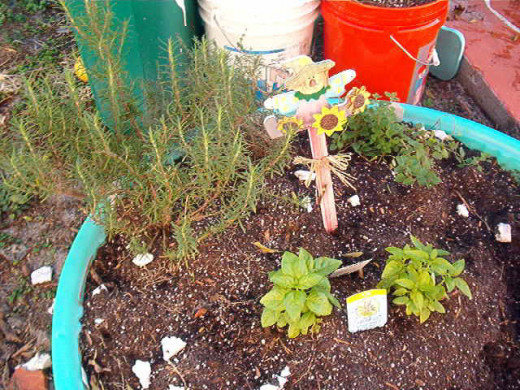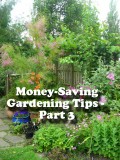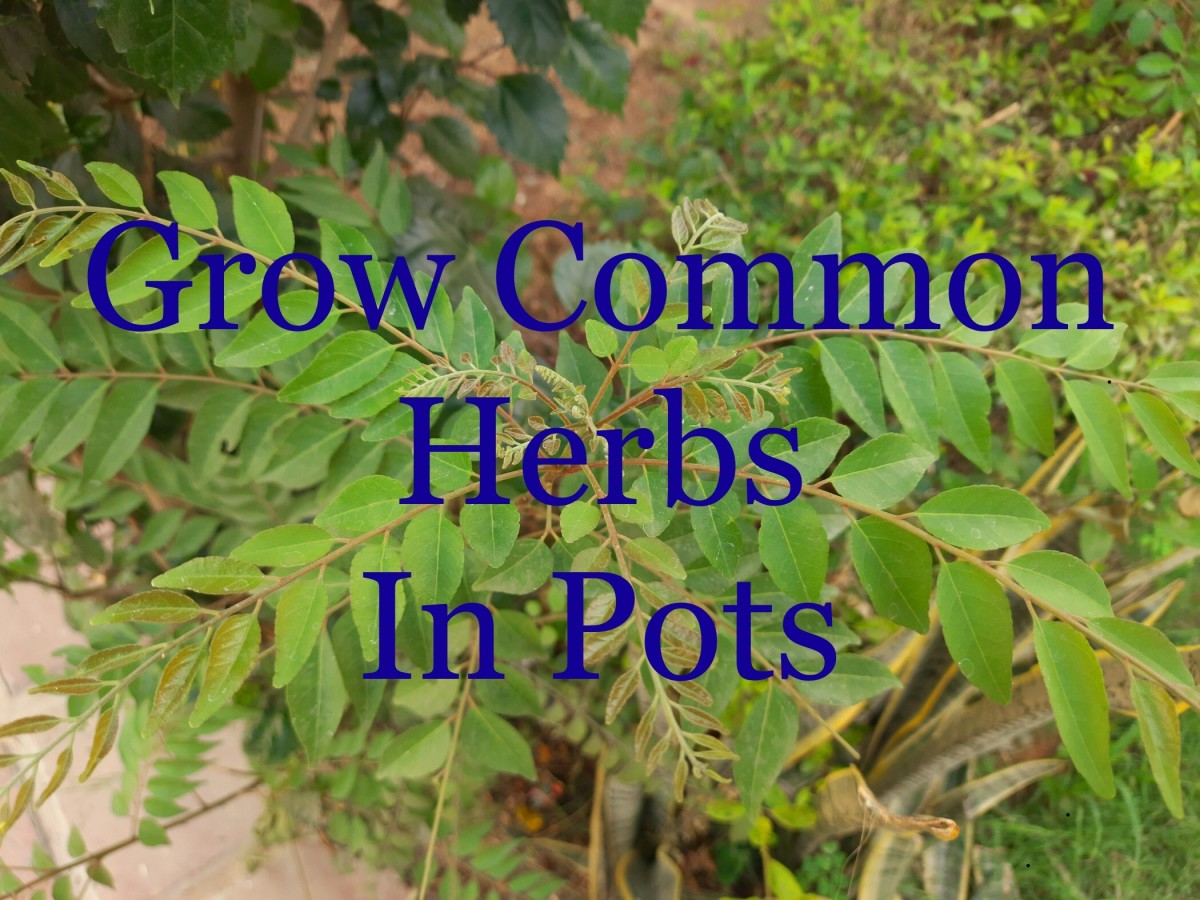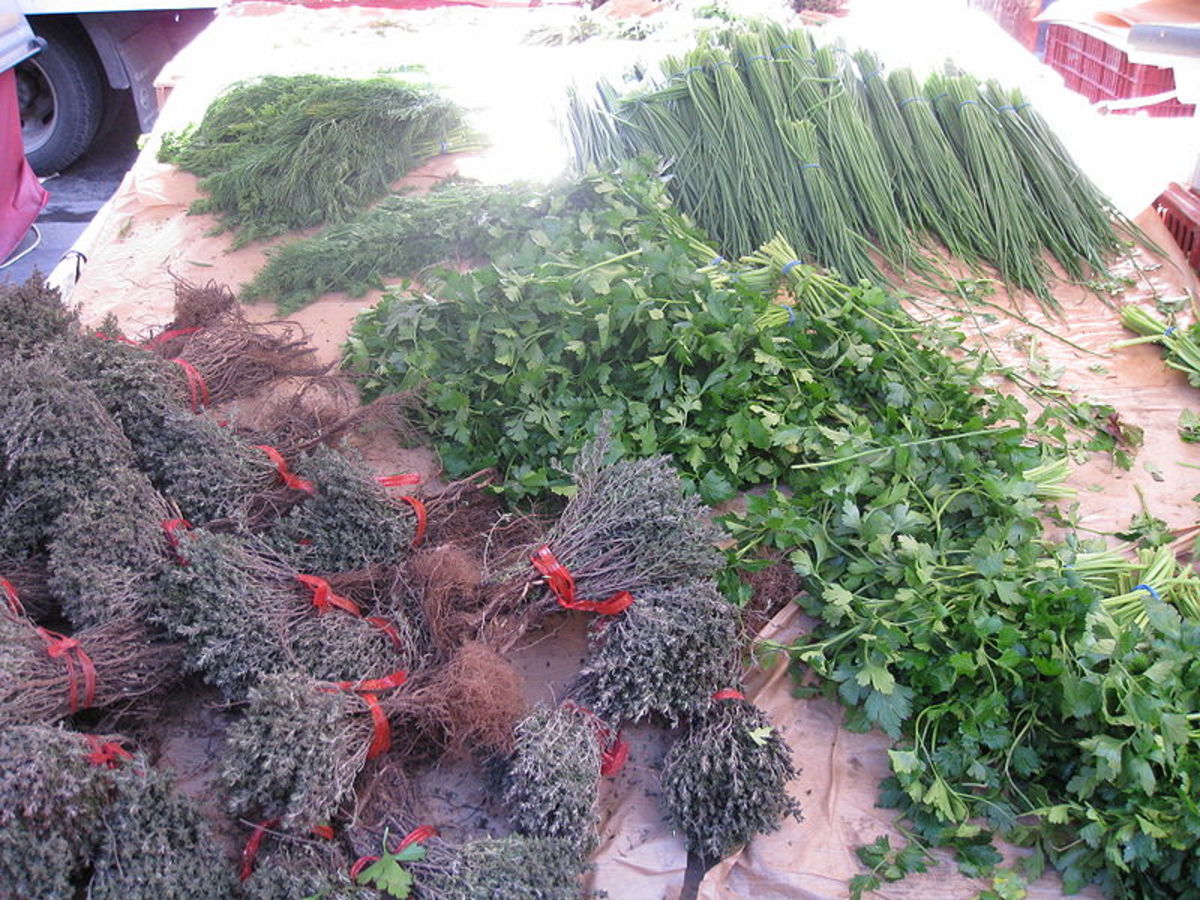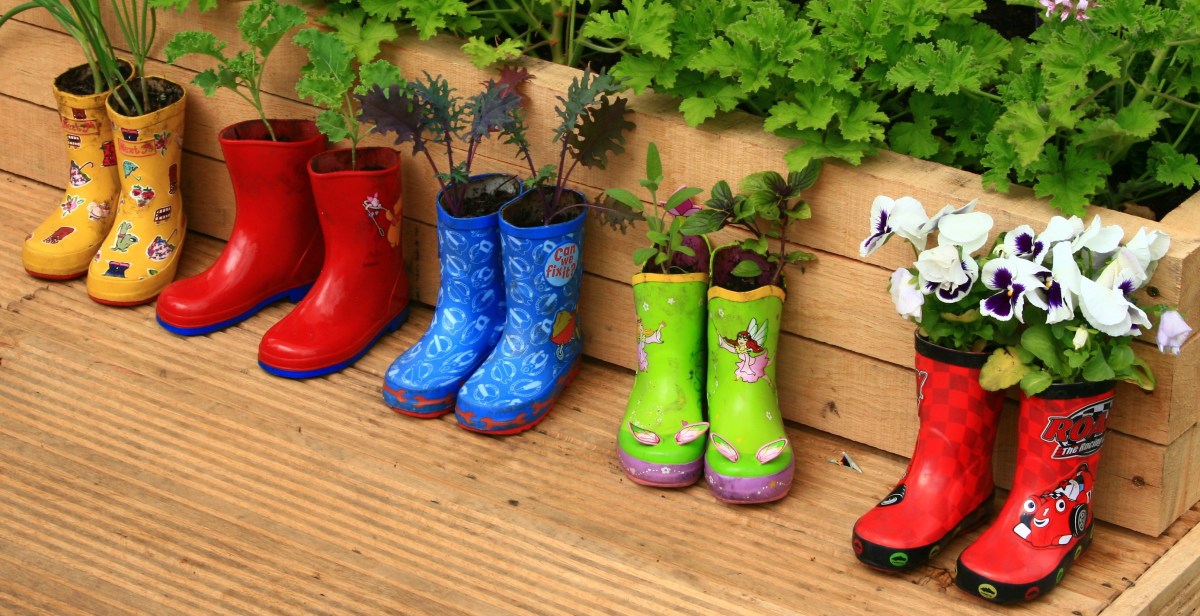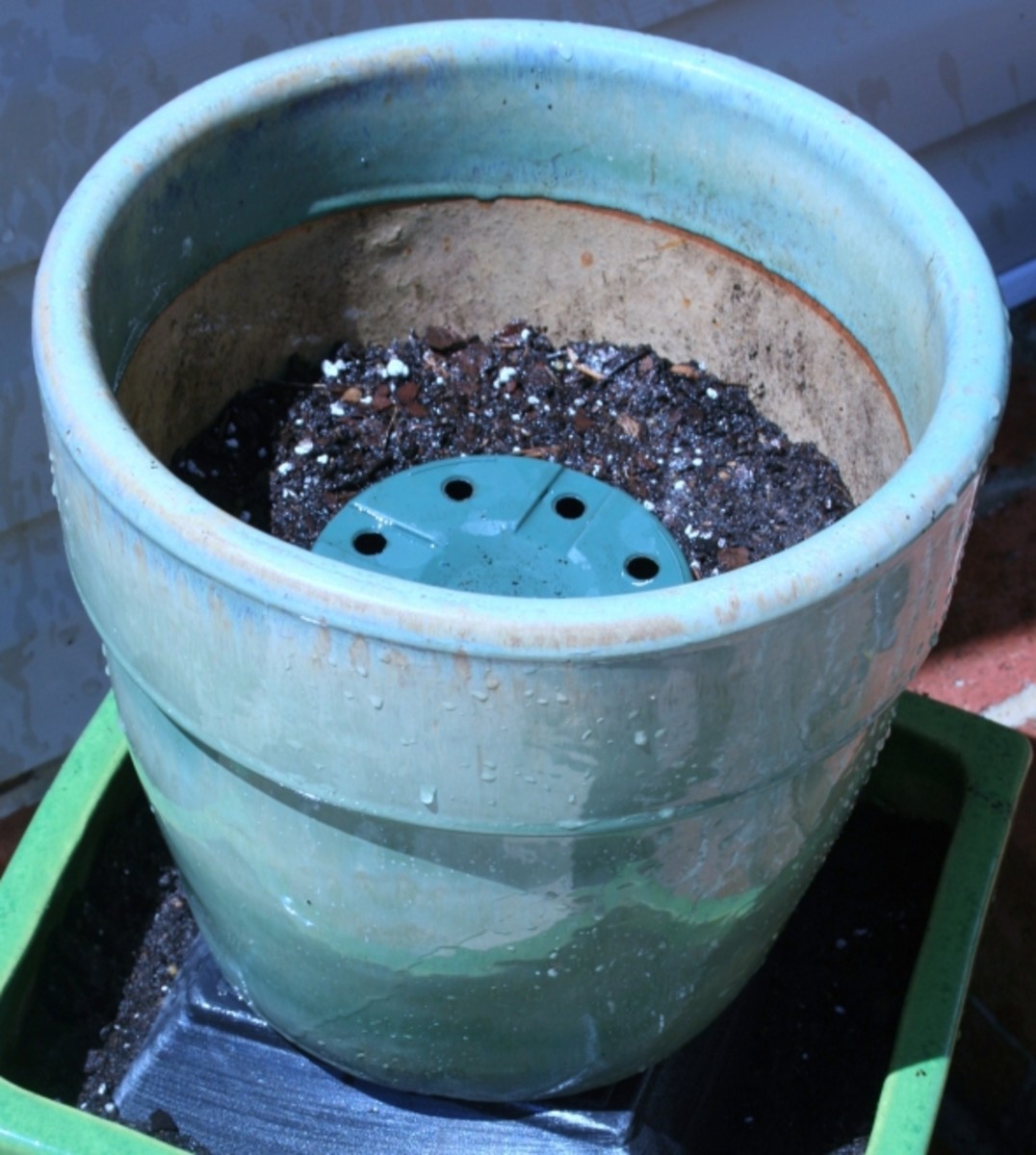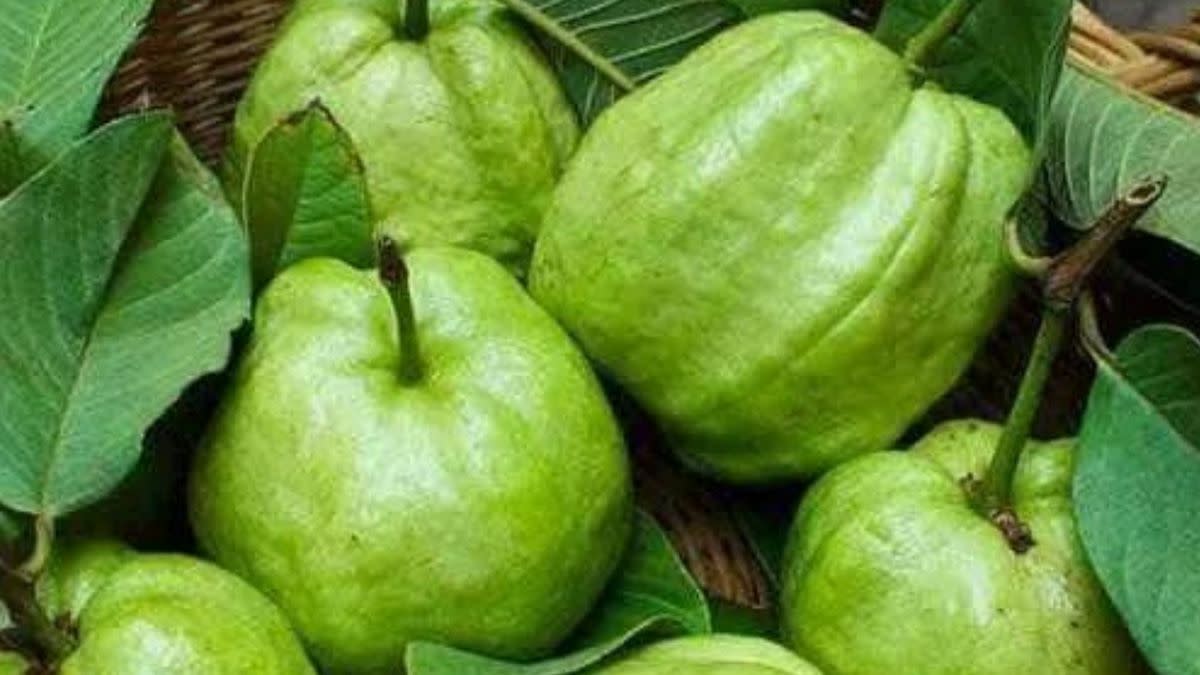Growing Culinary Herbs When You Don't Have Land: Extreme Space Saving Gardening
Growing Culinary Herbs When You Don't Have Land: Extreme Space Saving Gardening
There are so many benefits to growing your own herbs. For one thing, herbs you grow yourself are usually more pungent and fragrant than the ones you pick up packaged at the store. For another thing, store-bought herbs are costly and have a short shelf life. When you grow your own, you always have a fresh supply, ready at your fingertips. You never have to worry about running out of fresh flavors. One of the best reasons for growing herbs is for your health— fresh herbs are a much more flavorful, nutritious way to season your foods as opposed to fats, salts or dried seasoning blends with MSG.
A lot of people who have small houses, no yard or live in apartments take it for granted that gardening is out of the question. This is simply not true.
Screen Porch Corner Herb Garden

Finding the Space
If you have a small patio, yard or even a patch of space near the front door, you can fit an entire small herb garden in the space. Some ideal larger containers for herbs include an under-the-bed plastic storage container, a small child’s wading pool, a milk crate or a drawer from a discarded dresser. All you have to do is poke holes in the bottom of the container. When in doubt if the material is suitable for holding soil, line it with plastic (poke drainage holes), or with landscape fabric.
If even that is too big for you, utilize vertical space. If you’ve got 3 square feet next to your front door, use a wire rack or plant stand to double, triple or even quadruplethat space. You’ll have more than enough room to put out your potted herbs. A tiered planter will take up even less space while still offering enough room for several varieties of herbs.
Don’t forget to make use of overhead space. If you have a porch or even a very sunny window, hanging planters make a great addition. If you have a set of steps leading up to your door, line one side of them with pots containing herbs.
Keep in mind that most herbs can thrive in just 4 inches of space. A few small pots on a sunny window or counter may suffice in providing you with your favorite flavors. Hang one or two glass or wire shelves across the window, and again you can double and triple your capacity for holding herb plants.
Even if not on a windowsill, you can probably find a place near a window that’s big enough to stash two or three pots. They’re so attractive and aromatic, they’ll double as decorative elements. If you’d rather not have several pots around, use a long, narrow windowbox planter. You can grow about 3 herb plants in a 6 –inch long windowbox. Think of how much you could grow in a 12 or 18 inch window box—and think of what a great living centerpiece it would make for your dining room table.
Don’t be afraid to really think out of the box, either. Consider putting an over-the-door plastic shoe rack on your back door, facing outward. Poke a few holes in the bottom of the pockets and fill each pocket with dirt— then plant herbs in them. You can have a variety of about 20 herbs without taking up a square inch of ground or counter space!
Another great space saving option is a gallon-sized water bottle. Remove the label and poke a few drainage holes on the bottom. Cut six to eight 2-inch diameter holes around the sides of the bottle with a craft knife. Scoop in growing medium. As the soil line approaches a 2-inch hole, poke a seedling into it so the plant sticks out, sideways. Continue filling up to the next hole and poke in another seedling. Continue until you fill the entire bottle. Poke holes near the top of the bottle and use wire or hooks to hang it, or just set down indoors on top of a dish to catch the drips. Water it by pouring water into the bottle neck.
Check It Out!
Herb-Growing Tips for Small Spaces
- Use a soilless growing mixture. When growing herbs in pots, the lighter, the better. This will not only make them easier to move around and keep surrounding surfaces cleaner, but will also keep the roots from compacting or being suffocated.
- Create makeshift containers out of old coffee cans, margarine tubs and yogurt cups.
- Fertilize more frequently, but lightly. Grown in containers, herbs will suck up the nutrients quickly and the rest will run out of the soil through the drainage holes. Instead of fertilizing every 3 or 4 months, water with a water-soluble fertilizer ever 3 to 4 weeks, and reduce the amount of fertilizer to 1/4th of what the normal strength calls for.
Space-Saving Herbs
Most herbs are shallow-rooted, so they don’t need very deep soil to grow. Some are bushy, while others are tall and thin. Frequent pruning not only keeps growth under control, but keeps the plant producing and keeps them shaped so they’re convenient to fit your space. Some ideal candidates for a small space garden are:
Basil—low growing and bushy, basil is used frequently in Italian cooking. Love pesto sauce or fresh pasta? You’ll love sweet basil. For something spicier, try Thai basil. For a real treat, throw the blossoms in a salad. As soon as basil stems get woody, use up the plant and get new seedlings, or plant new seeds.
Chamomile—if you enjoy a soothing cup of caffeine-free tea, grow your own chamomile. Steep a couple of tablespoons of fresh leaves. Warning: chamomile is related to the ragweed family, so if you’re allergic, skip this one.
Chives—whether you prefer garlic or onion chives, they have a great mild flavor. They’re perfect for salads, sprinkling over omelets or any kind of fruits and vegetables. Use chives raw; the flavor is so delicate, they don’t hold up in cooking.
Chervil—if you start a chervil plant in the fall, you’ll be enjoying a harvest until summer. Used similar to parsley, chervil is popular in French cuisine; it has a mildly anise flavor.
Coriander—the Spanish refer to it as cilantro. If you like food with a southwestern or Mexican-style flavor, this herb will go very far for you in making salsa, sofrito, tacos or bean dishes. It looks a lot like parsley, so label your plants if you have both to avoid confusion.
Dill—this one can be a little difficult if you don’t have a lot of space. You don’t want to grow this one sideways in a water bottle. It’s a tall, spiky plant, so you don’t need width so much as you need room for it to shoot up over 2 feet. A little dill can go a long way, though, especially for seafood dishes.
Lemon balm—one of the most heavenly scented plants, lemon balm smells like a lemon lollypop. The delicate lemon flavor doesn’t make it through harsh temperatures, so it’s better to sprinkle some chopped lemon balm over food after cooking, or add the leaves to a salad. The leaves will also really brighten the flavors of a smoothie and make a great sun tea.
Mint—there are so many types of mints you might find it hard to choose. Spearmint and peppermint are old standards that you can use for meals, desserts or beverages. Try apple mint, chocolate mint or orange mint for variations on the flavors. Since mint plants will crowd out others, they’re best grown in individual pots.
Oregano—much loved in Mediterranean cooking, if you enjoy Greek or Italian foods, oregano is an absolute must. It’s so small and compact, and the flavor so strong, that a single oregano plant will go very far. Oregano dries well, and is even stronger when dry, so if the plant gets a little bushy just prune it and dry the leaves for preservation.
Parsley—a great all-purpose herb for virtually any type of cooking, parsley doesn’t have a strong flavor on its own but it enhances the flavor of whatever you put it into. If you like to use it more for cooking, get the tastier flat leaf variety; if you prefer using it for garnish, the curly leaf parsley is prettier.
Rosemary— another all-purpose herb, rosemary can go into any number of recipes. Like oregano, it dries beautifully. Prune it often, however, as rosemary is a shrub that can grow over three feet if you let it.Rosemary also makes an excellent addition to bouquets.
Sage—garden sage is great for pork and poultry dishes, as well as vegetables, sauces and dressings. You’ll be glad to have it available when the harvest season rolls around. This is another one that’s lovely in bouquets.
Tarragon—delicious with its mild anise flavor, it’s great for dressings and flavored vinegars. Treat tarragon like an annual—once its root system begins to out-grow the pot, use up the plant and start a new one, or transplant a new seedling.
Thyme— small and compact, versatile, used in many different types of cuisine and common recipes, easy to use fresh or dried, no herb garden should be without thyme. For a flavor twist, try lemon thyme, too.
Many common culinary herbs require very, very little space to grow and thrive and there are a lot of creative places where you can put them. You can have an entire garden without owning a square foot of land.
Herbs grown in 3-foot diameter wading pool
